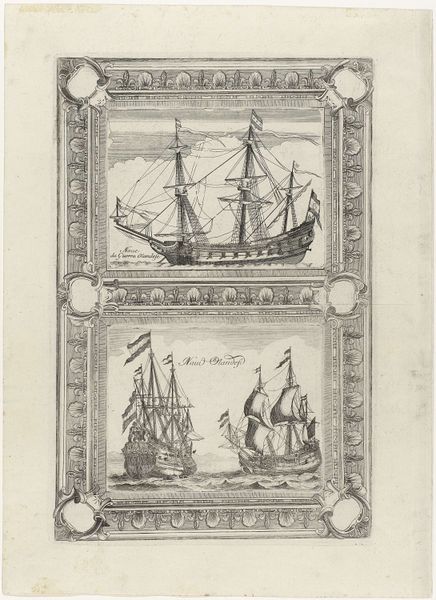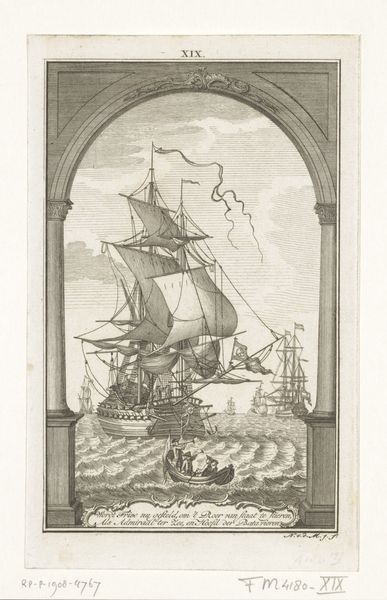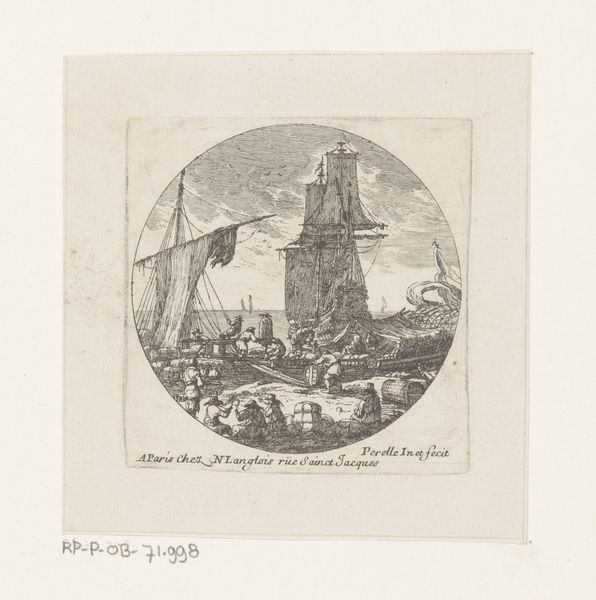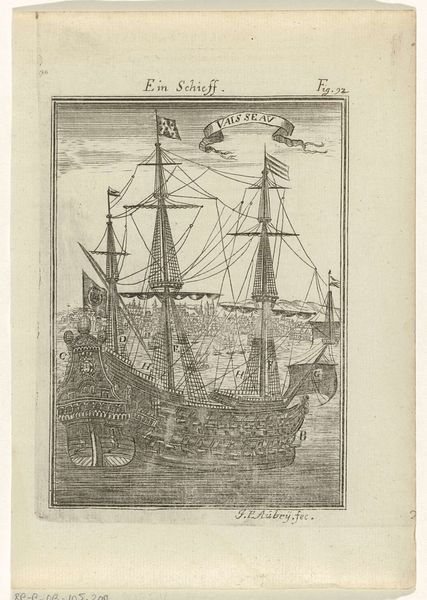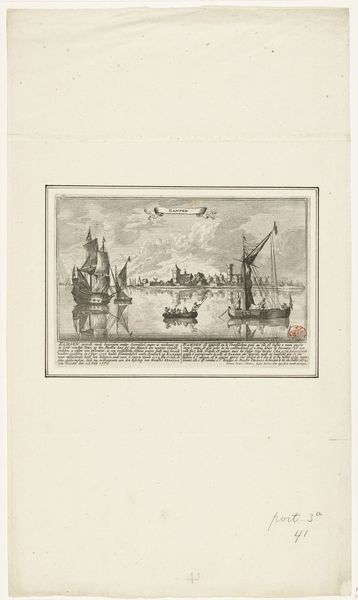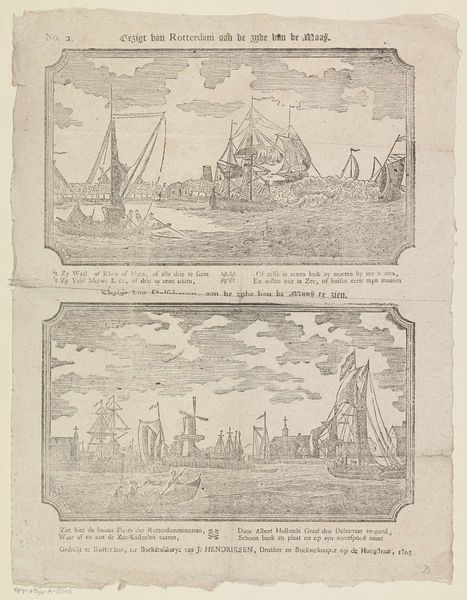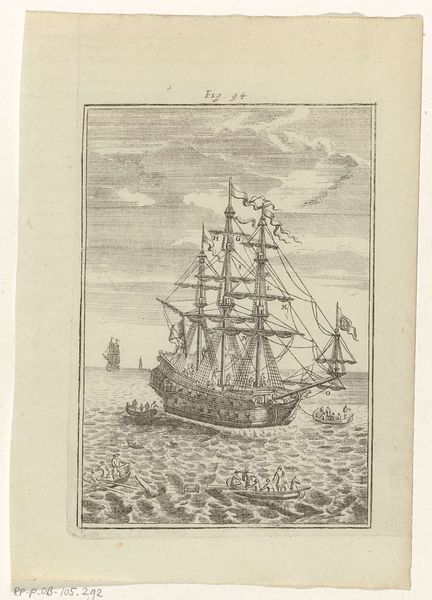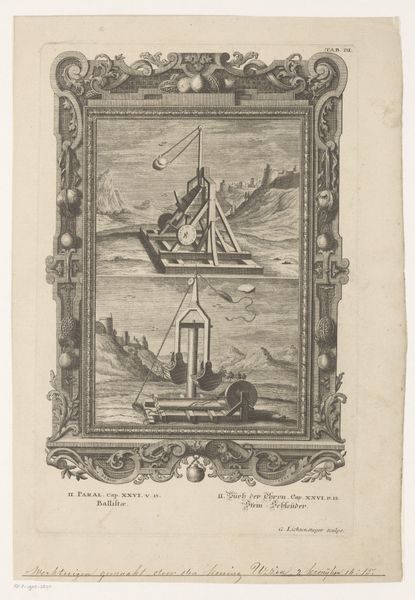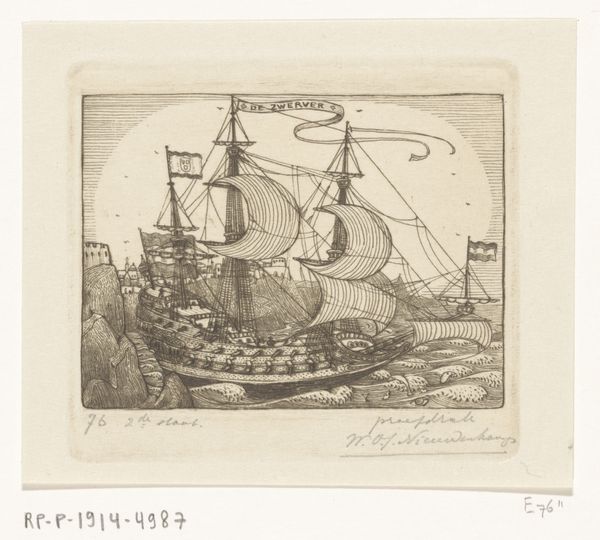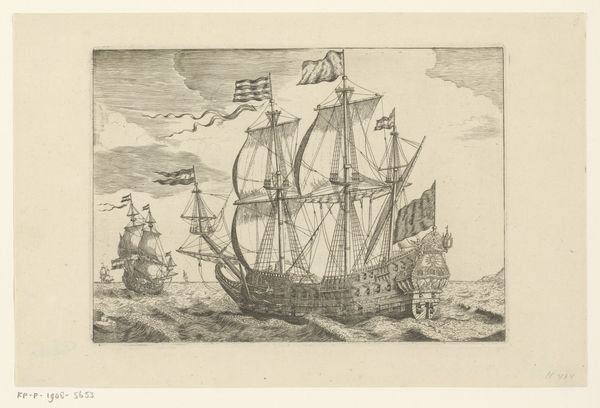
print, engraving
#
baroque
#
dutch-golden-age
# print
#
landscape
#
geometric
#
line
#
history-painting
#
engraving
Dimensions: height 299 mm, width 263 mm, height 131 mm, width 175 mm, height 131 mm, width 181 mm
Copyright: Rijks Museum: Open Domain
Editor: This print, titled "Two Warships", dates roughly from 1660 to 1718 and is attributed to Vicenzo Maria Coronelli. The detail is amazing. I find it interesting that the ships are placed within these very ornate, decorative frames. What strikes you about this work? Curator: What immediately grabs my attention is how these aren't just representations of ships, but active participants in the politics of imagery during the Dutch Golden Age. Think about the context. The Dutch Republic was a major naval power and a mercantile empire. Editor: So, these images served a purpose beyond simple documentation? Curator: Precisely. Prints like these circulated widely. They visually communicated Dutch power, technical prowess in shipbuilding, and their control over maritime trade routes. They also contributed to a sense of national identity. The ships themselves become symbols of the state. Do you notice how different the style is between each ship in terms of purpose, naval or trade? Editor: I do now that you point it out. The top one seems larger and more decorative. So its a flex of naval power in image form! Were these prints commissioned by the government? Curator: Potentially. Patrons of the arts commissioned prints to signal their status. What you're seeing is a visual strategy reinforcing power through cultural representation. Editor: This reframes my entire perception of the artwork; it goes beyond just being a historical depiction of ships and becomes an artifact deeply entrenched in socio-political narratives of its time. I learned how political context dictates artistic representation. Curator: And seeing how art actively participates in shaping a society's image, its power structures. Thanks!
Comments
No comments
Be the first to comment and join the conversation on the ultimate creative platform.
